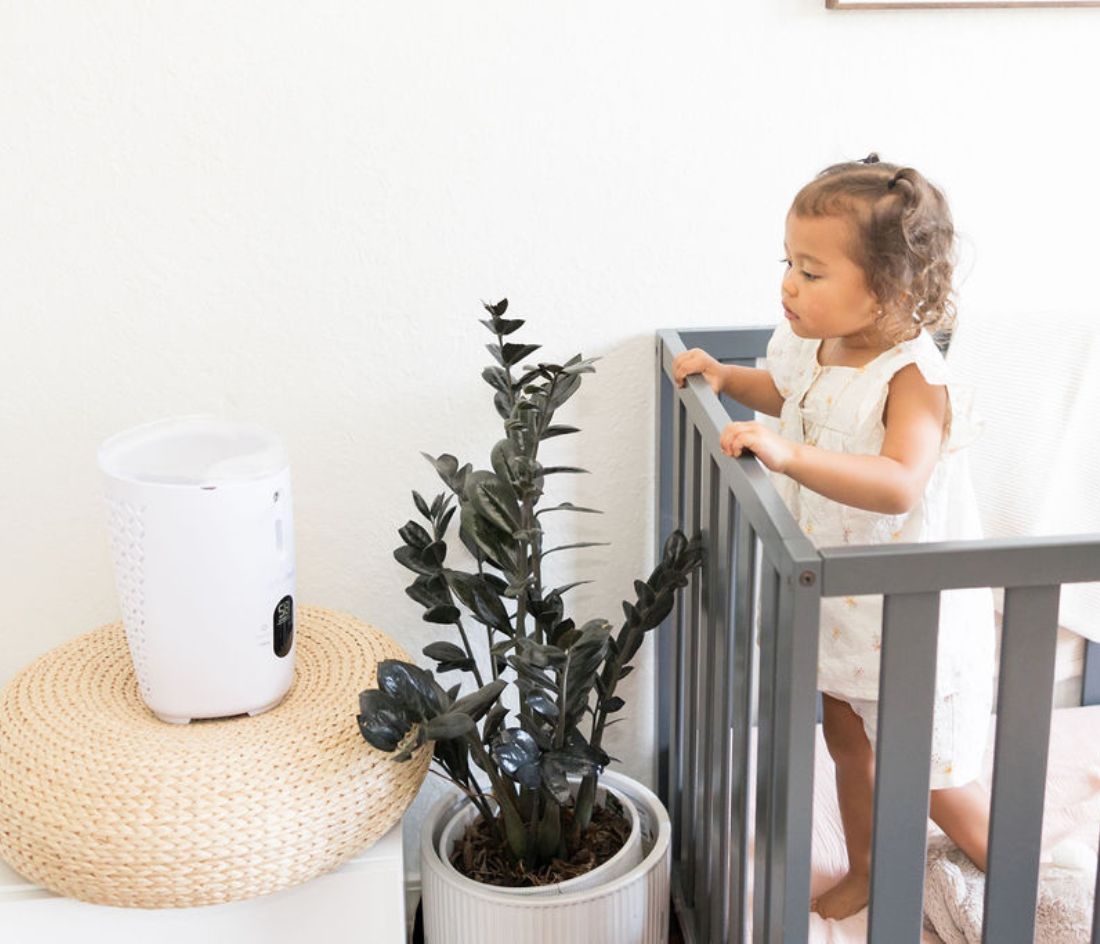Guest post by Holly Sanford, RN, BSN, CPEN
Unfortunately, it’s that time of year again when RSV infections increase, and little ones and adults experience the dreaded symptoms of runny nose, cough and congestion. In this article, learn 5 key signs of RSV and a few home treatment tips.
5 Key Signs of RSV
Respiratory syncytial virus, or RSV, is a highly contagious illness that most children will experience before age two. Symptoms typically develop within two to five days of exposure and last for one to two weeks. While the early phase is usually mild, little ones will often experience more acute symptoms as the illness progresses. Although most children can manage their RSV symptoms from home, some complications of RSV require hospitalization for respiratory distress or dehydration.

Read these five helpful tips to help identify if RSV has entered your home.
1. Congestion/Runny Nose
One of the most common signs of an RSV infection is congestion or a runny nose. You may notice that your little one has an abnormal amount of nasal secretions and requires more suctioning or blowing the nose with this virus.
- Watch for signs of respiratory distress such as rapid breathing, labored breathing, color changes of the lip (pale or blue), nasal flaring, wheezing, changes in alertness, or changes in body position to breathe. Notify your provider if you are ever concerned.
- Suction as needed with the NozeBot, which provides hospital grade suction in the comfort of your home. Administer a few drops of saline or saline mist to each side of the nose before suctioning. When suctioning a baby, swaddle the infant first since wiggles will increase during suctioning. When suctioning a toddler, allow the child to explore the NozeBot and practice first on a favorite stuffed animal prior to suctioning.
2. Cough/Wheezing
Your little one may exhibit a wheezing sound, particularly when your child is exhaling. This is because the airway becomes narrower from swelling. Additionally, extra mucous in the airway can make it more difficult for your child to breathe.
- Encourage coughing to help clear the mucus from the lungs.
- Offer a teaspoon of honey to soothe a sore throat if your child is over 1 year old and vaccinated.
- Provide plenty of beverages or breastmilk/formula to maintain adequate hydration to keep secretions loose and easier to cough or suction.
- Ensure that there is humidity in their room because dry airways cause more coughing.

3. Fever
While some children never have a fever during RSV, others may have a low-grade fever. Monitor your child to ensure comfort if a fever does occur.
- Tylenol/Motrin can be administered if your child has a fever (never give Motrin to a baby 6 months or younger or to a little one with allergies to these medications).
- Help your child regulate body temperature by providing appropriate levels of clothing or blankets. Remove excess blankets if your child has a fever.
- Offer a cool washcloth to the forehead if your toddler is uncomfortable with a fever.
4. Irritability
As with most illnesses, your little one may not quite be themselves. You may notice that your child has more tantrums and struggles to comply with instructions.
- Provide extra patience and snuggles! Your child may not know how to communicate needs or feelings just yet.
- Allow extra time for rest and relaxing activities while sick.
5. Decreased Appetite
Because little ones are often exhausted from fighting the infection, it is common for children to have a decreased appetite. Infants may have a difficult time feeding from the breast or bottle because of the nasal congestion and mucous. Toddlers may not eat their usual amount of solid food. Adequate hydration is paramount to a timely recovery
- For infants, suction the nose prior to feeding to allow the baby to breathe better while eating. Offer feeds more frequently as the baby may tire more quickly than usual while feeding with an illness. Also suction the nose prior to them sleeping to help them breathe better during their nap.
- Suction your toddler’s nose prior to meals and beverages. Focus on providing beverages that your child desires to consume (and also has electrolytes and calories), such as Pedialyte, juice, milk, or other beverages that do not contain caffeine.

If RSV has made its way into your home this season, monitor your child’s breathing and hydration status (wet diapers and tears). Notify your healthcare provider if you are ever concerned about your little one. Be sure to keep your child home from school or daycare until your little one is fever free for 24 hours and until your child does not need additional help with suctioning. Identifying these five symptoms may help you recognize and treat RSV as soon as your child is infected.
Looking for more information on RSV?
- 5 Tips to Prevent the RSV Virus From Entering Your Home
- What Parents Need to Know About RSV
- How to Prepare For An Early RSV Season
- Why is RSV on the Rise Among Children?
Holly Sanford, RN, BSN, CPEN is a mother and a pediatric nurse of 9 years with a lifelong passion for helping children and their families. In her free time, she loves cooking new recipes, traveling to unique places and staying active with her family.
The Nozebot is a battery-powered suction device designed to clear nasal congestion in babies and children.



